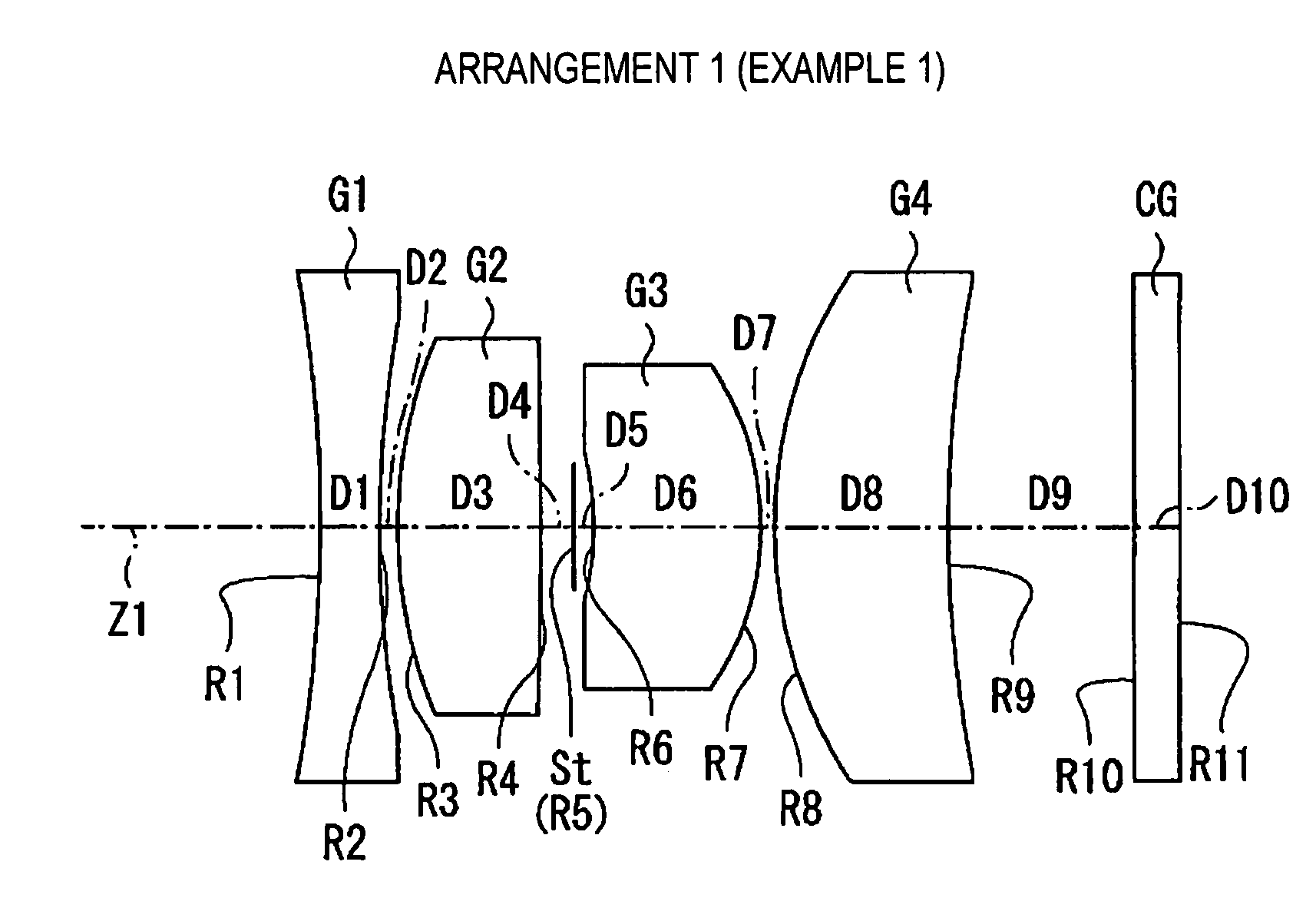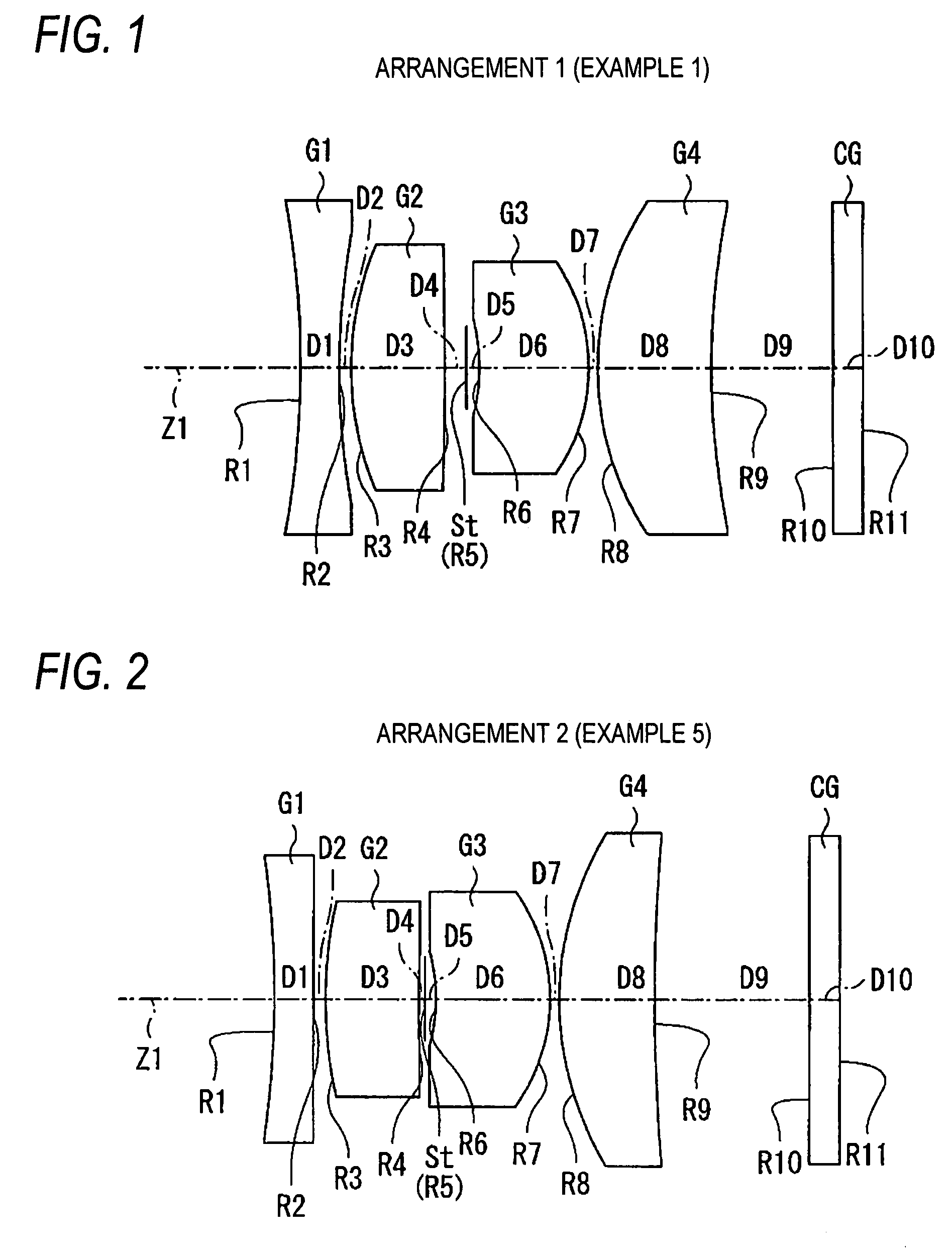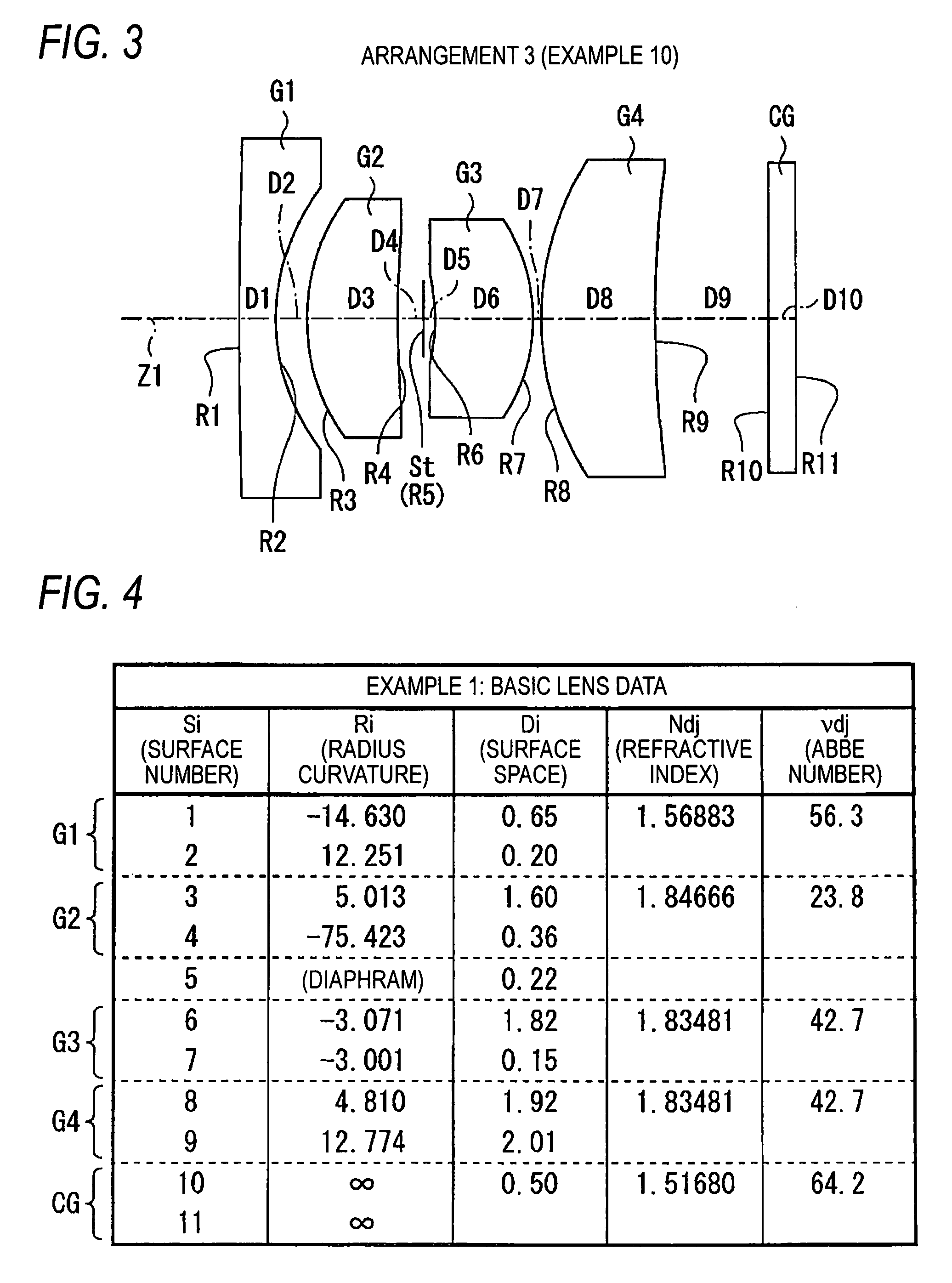Wide-angle imaging lens
a wide-angle imaging and lens technology, applied in the field of wide-angle imaging lenses, can solve the problems of affecting the service life of the lens, so as to achieve the effect of reducing the price and ensuring the service li
- Summary
- Abstract
- Description
- Claims
- Application Information
AI Technical Summary
Benefits of technology
Problems solved by technology
Method used
Image
Examples
examples
[0061]Examples 1 to 10 for providing numerical values for the wide-angle imaging lens of this embodiment will be summarized, while employing example 1 as a base.
[0062]As example 1, the basic lens data, correlated with the arrangement of the wide-angle imaging lens shown in FIG. 1, is shown in FIG. 4. A number provided for a surface of a component is entered in a surface number Si lens data column shown in FIG. 4. This number is gradually incremented toward an image, while the number for the surface of a component located nearest an object is defined as 1. A value (mm) for the curvature radius of the i-th component surface from the object is entered in a curvature radius Ri column, in consonance with Ri in FIG. 1. Likewise, space (mm) on the light axis between the i-th surface Si and the (i+1)-th surface Si+1 from the object is entered in surface space Di, in consonance with Di in FIG. 1. In a refractive index Ndj column, a refractive index is entered at d-line (wavelength 587.6 nm) ...
PUM
 Login to View More
Login to View More Abstract
Description
Claims
Application Information
 Login to View More
Login to View More - R&D
- Intellectual Property
- Life Sciences
- Materials
- Tech Scout
- Unparalleled Data Quality
- Higher Quality Content
- 60% Fewer Hallucinations
Browse by: Latest US Patents, China's latest patents, Technical Efficacy Thesaurus, Application Domain, Technology Topic, Popular Technical Reports.
© 2025 PatSnap. All rights reserved.Legal|Privacy policy|Modern Slavery Act Transparency Statement|Sitemap|About US| Contact US: help@patsnap.com



